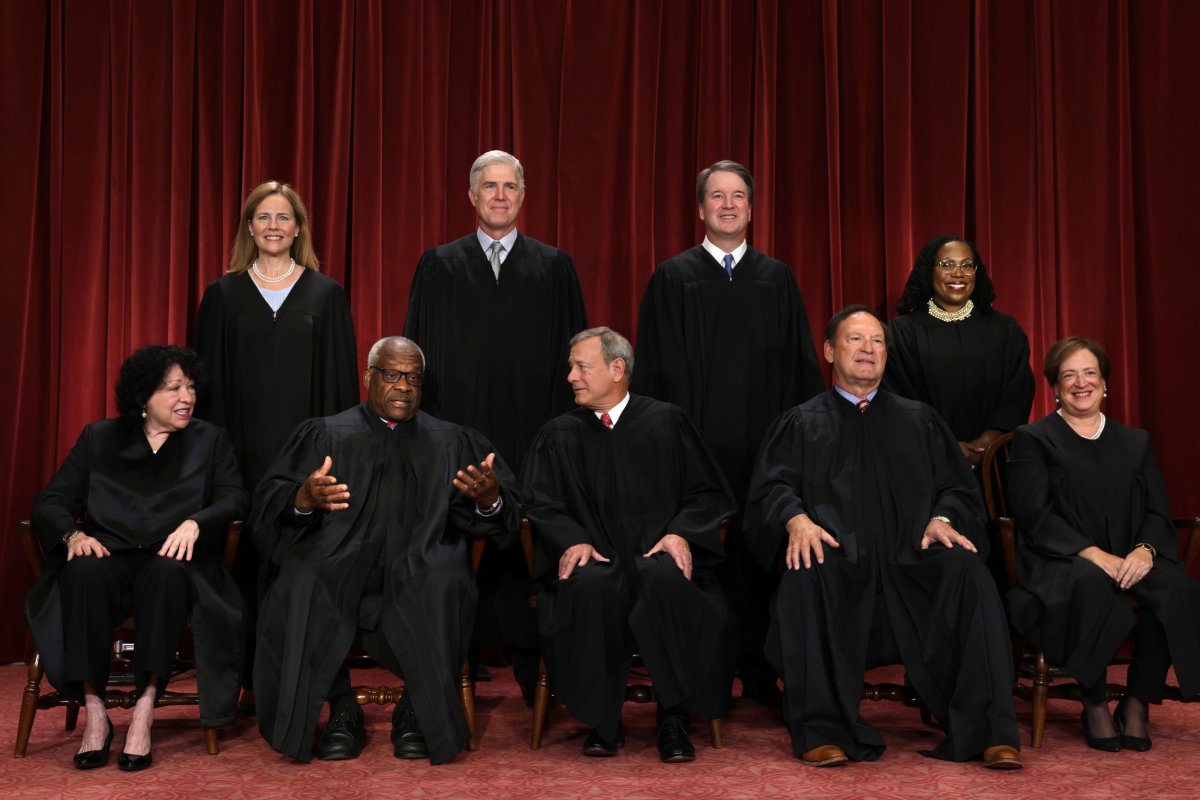The U.S. Supreme Court's conservative and liberal justices split across ideologies this week on a case in which the majority and dissenting lineups featured unlikely names.
On Tuesday, the court ruled 5-4 in a case involving a Romanian-American dual citizen who failed to report millions of dollars in foreign bank accounts, with the question before the court whether he violated the Bank Secrecy Act by failing to disclose the funds.
The court ultimately ruled in the taxpayer's favor, but the split was a surprising division. On one side of the court were Justices Neil Gorsuch, Samuel Alito, Brett Kavanaugh, John Roberts and Ketanji Brown Jackson. On the other side were Justices Clarence Thomas, Amy Coney Barrett, Sonia Sotomayor and Elena Kagan.
It brought to light an aspect of the Supreme Court that may be surprising. Although many expect it to be divided along partisan lines, this is not always the case. Even unanimous rulings are not rare, although they are becoming less common. Last term, 29 percent of the cases were decided without a single dissenting vote and 17 percent were decided with only one dissenting vote.
In the latest case, Jackson, the liberal newcomer on the bench, joined three of the court's conservative justices and Chief Justice Roberts—who is considered the middle ground on the court—in the majority ruling. The dissent consisted of two liberal stalwarts and two conservatives, including Thomas, who is arguably the most conservative justice on the bench.

The unlikely divide comes in contrast to expectations that the court's fairly new conservative majority would regularly steamroll their liberal counterparts, and to last term's decisions, which resulted in the highest numbers of polarized decisions—where liberal justices are all on one side and conservatives on the other—in decades.
Recent rulings show that while the six-member conservative bloc has dominated headlines for having been united in important rulings, like the one that overturned the constitutional right to abortion, four of the court's conservative justices—including all three of the Trump-appointed justices (Barrett, Gorsuch and Kavanaugh)—have occasionally joined their liberal colleagues in majority opinions.
The majority ruling in Bittner vs. United States was led by Gorsuch. Although conservative colleagues Roberts, Alito and Kavanaugh agreed with Gorsuch's opinion aside from one section, Jackson joined in full. At the same time, Barrett, who is almost always aligned with Gorsuch, wrote the dissenting opinion.
Tuesday also saw Jackson's first majority opinion in a 9-0 vote. The first Black woman to serve on the court, Jackson wrote the opinion in a dispute between Delaware and other states over unclaimed MoneyGram checks, Delaware v. Pennsylvania et al, on exceptions to reports of special master.
Alex Badas, an assistant professor at the University of Houston, told Newsweek that it is common for a justice's first opinion to be unanimous in order to show "collegiality" among the bench.
"It also allows the Justices to get sort of an 'easy' case as their first opinion. As the first year Justice is still learning the ropes of the institution," Badas said.
In 2020, 46 percent of cases were unanimous decisions after 30 percent in 2019. But last term's 29 percent was the lowest amount since 1986.
On the other hand, polarized decisions are on the rise. Last term, they made up 21 percent of decisions, the highest percentage since 1995.
"Typically, people view the Court as less legitimate when they believe the Supreme Court is motivated by partisan politics," Badas told Newsweek.
Badas said one way the court has maintained legitimacy, despite high-profile decisions, is through public opinion. Although the American people might disagree with the court's ruling, they will often still give justices the benefit of the doubt if they view the court as a fair and legalistic institution.
However, as the court becomes increasingly polarized in its decision-making, "the public is more likely to perceive the Court as politically motivated and this may harm the court's legitimacy," Badas said.
Uncommon Knowledge
Newsweek is committed to challenging conventional wisdom and finding connections in the search for common ground.
Newsweek is committed to challenging conventional wisdom and finding connections in the search for common ground.
About the writer
Katherine Fung is a Newsweek reporter based in New York City. Her focus is reporting on U.S. and world politics. ... Read more
To read how Newsweek uses AI as a newsroom tool, Click here.








